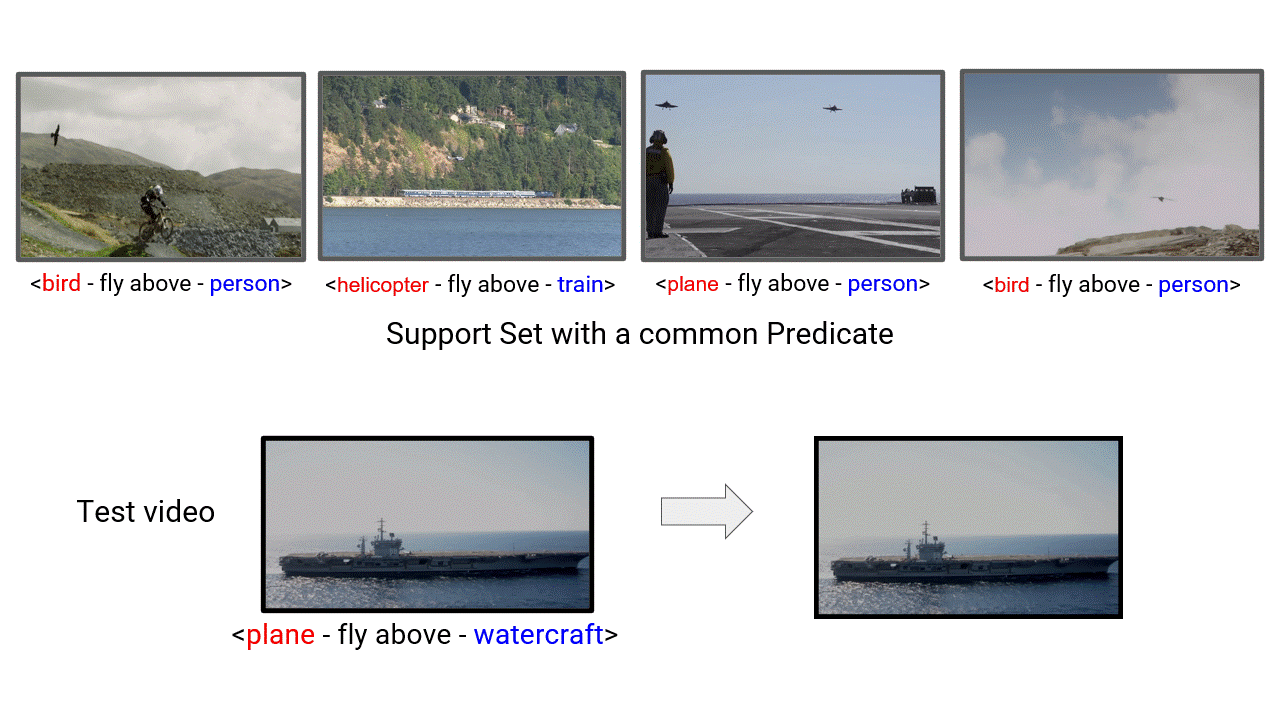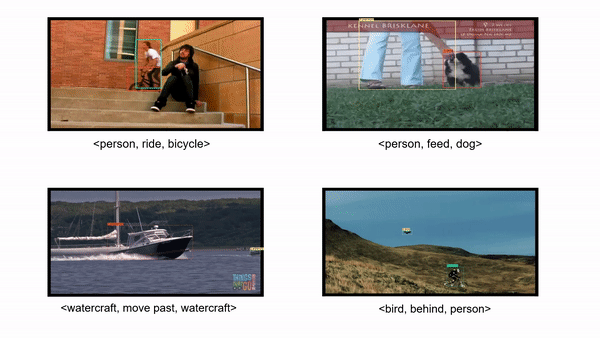Few-Shot Referring Relationships in Videos
Yogesh Kumar, Anand Mishra
Indian Institute of Technology, Jodhpur
CVPR 2023
[Paper][Supplementry Material][Code]

Abstract
Interpreting visual relationships is a core aspect of comprehensive video understanding. Given a query visual relationship as
Highlights
- We propose a novel problem setup for referring relationship task in videos where with the help of a few videos, the model has to learn to localize subject and object corresponding to a query visual relationship that is unseen during training..
- We propose a new formulation to solve this task based on the minimization of an objective function on T-partite random field where T is the number of frames in the test video, and the vertices of the random field representing potential bounding boxes for subject and objects correspond to the random variables.
- We present two aggregation techniques to enrich query-conditioned relational embeddings, namely global semantic and local localization aggregations.
Qualitative Results

Bibtex
Please cite this work as follows::
@InProceedings{Kumar_2023_CVPR,
author = {Kumar, Yogesh and Mishra, Anand},
title = {Few-Shot Referring Relationships in Videos},
booktitle = {Proceedings of the IEEE/CVF Conference on Computer Vision and Pattern Recognition (CVPR)},
month = {June},
year = {2023},
pages = {2289-2298}
}
}
}